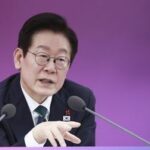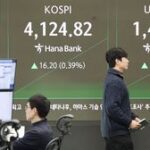
As South Korea and the United States conduct their joint Ulchi Freedom Shield (UFS) exercises, North Korean leader Kim Jong Un has taken an active role in observing military drills for the first time during this period.
Unlike last year, when Kim used the All-Military Command Exercise to display his ambitions for South Korea and to defy the UFS, this year’s focus has shifted to showcasing North Korea’s drone capabilities.
On August 24, North Korean state media, the Korean Central News Agency (KCNA), reported that Kim Jong Un oversaw performance tests of various drones at the Drone Institute of the Academy of National Defense Science. The KCNA highlighted that these drones are designed for different strike ranges and are tasked with attacking targets on land and at sea.
Photos released by North Korea reveal at least two types of drones flying toward targets and exploding.
Kim stressed the importance of advancing drone technology for military readiness. He stated, “Developing a range of drones and continually improving their combat capabilities is essential for preparedness. This aligns with global military trends and battlefield experiences. We need to produce more suicide drones for tactical infantry and special operations, as well as strategic reconnaissance and multipurpose attack drones.”
It is interpreted that North Korea intended to strengthen its related capabilities as being the effectiveness drones demonstrated in recent conflicts, such as the Russia-Ukraine war and the Israel-Hamas conflict.
Kim emphasized the need for continuous development of underwater strategic weapon systems, such as nuclear torpedoes and various suicide attack underwater drones, reflecting the country’s characteristics as a maritime nation. He also stressed the importance of actively incorporating AI technology into drone development.
Since the AI algorithm is utilized on actual battlefields, North Korea also focuses on adopting it.

In recent years, North Korea has prioritized material superiority, aggressively deploying outdated fighter jets and launching various missiles in response to U.S.-South Korea military drills. However, during the current UFS period, North Korea focuses on unveiling new weapons as an efficient response rather than engaging in proportional retaliation. Observers note that challenges in mobilizing military personnel for disaster recovery efforts have led North Korea to showcase its advancements in weapon systems, reportedly with support from Russia.
A spokesperson for the South Korean Ministry of Unification, Koo Byoung Sam, stated during a regular briefing that “Although drone development is one of the key tasks in North Korea’s five-year plan for the development of defense science and weapon systems, it is their first time unveiling loitering munition.”
Moreover, the resemblance of some of the newly unveiled drones to Russian models has led to speculation that they result from military cooperation between North Korea and Russia.
Moreover, as some of the unveiled drones resemble Russian drones, there is speculation that these are the outcome of military cooperation between North Korea and Russia.
Hong Min, a senior researcher at the Korea Institute for National Unification, pointed out, “The stingray-winged drone resembles Israel’s Harop, while the X-winged drone is similar to Russia’s Lancet-3. This showcases a psychological warfare dimension in response to the U.S.-South Korea joint exercises and their air power.”
He emphasized that, given the recent military cooperation between North Korea and Russia, this could signify that North Korea is establishing a system capable of mass-producing loitering munitions for deployment in the Ukraine war.
This implies that North Korea may be a logistical base for Russia while modernizing its weapon systems.


Military officials have called for a detailed analysis of the newly revealed North Korean drones.
Lee Chang Hyun, deputy spokesperson for the South Korean Joint Chiefs of Staff, addressed the matter during a regular briefing at the Ministry of National Defense. He said, “U.S. and South Korean intelligence agencies are closely monitoring North Korea’s military activities, including developments in drone technology. Further analysis of North Korea’s recently unveiled drones is necessary.”
Lee noted that the newly revealed drones resemble Israel’s Harop and Russia’s Lancet-3. He remarked, “We need to conduct comprehensive analyses. Some of these drones might have been obtained through previous exchanges between North Korea and Russia.”
He also emphasized, “We must consider the potential for enhanced performance in these drones, especially those received through external sources.”















Most Commented